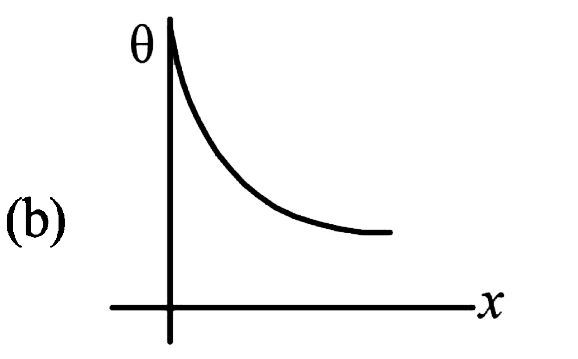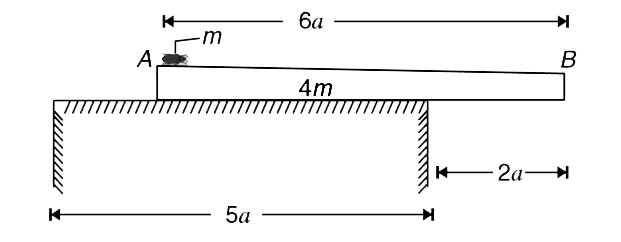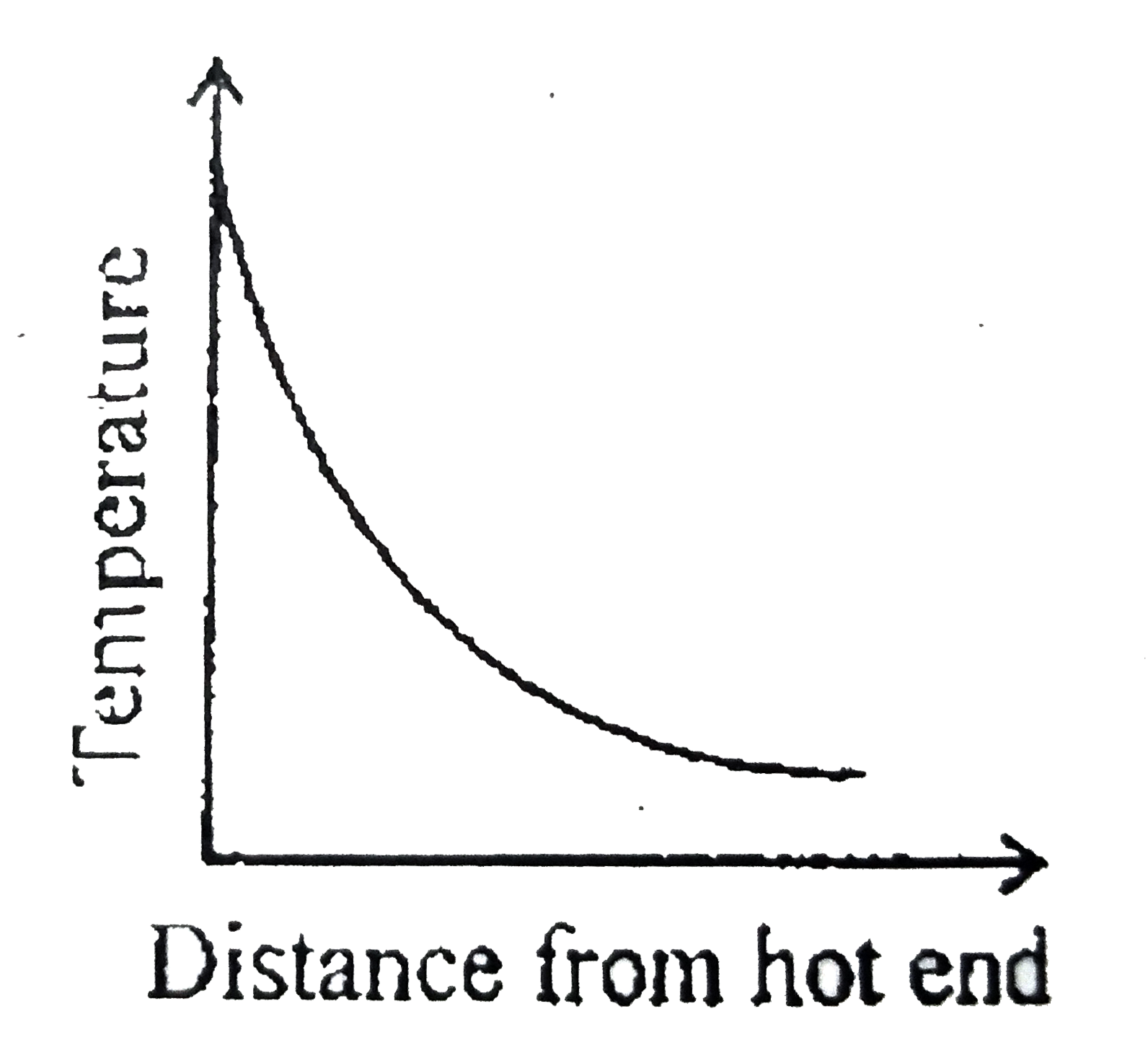A long metallic bar is carrying heat from on eof its ends to the other end under steady-state. The variation of temperature θ along the length x of the bar from its hot end is best described by which of the following figures?




The correct Answer is:A
(a) The heat flow rate is given by
dQdt=KA(θ1−θ)x
⇒θ1−θ=xKAdQdt⇒θ=θ1−xkAdQdt
Where is θ1 is the temperature of hot end and θ is
temperature at a distance x from hot end.
The above equation can be graphically represented by
Option (a)
Topper's Solved these Questions
Similar Questions
The ends of a metallic bar are maintained at different temperature and there is no loss/gain of heat from the sides of the bar due to conduction or radiation. In the steady state the temperature variation along the length of the bar is a shown in the figure what do you think about the cross sectional area of the bar?

View SolutionA uniform bar AB of length 6a has been placed on a horizontal smooth table of width 5 a as shown in the figure. Length 2a of the bar is overhanging. Mass of the bar is 4m. An insect of mass m is sitting at the end A of the bar. The insect walks along the length of the bar to reach its other end B.

(a) Will the bar topple when the insect reaches end B of the bar ?
(b) After the insect reaches at B, another insect of mass M lands on the end A of the bar. Find the largest value of M which will not topple the bar.
View Solution
Knowledge Check
One end of a long cylindrical bar is kept at 200∘C and the other end is matintained at 40∘C. In the steady state the graph of temperature of bar against distance from not end is shown here. From the graph which of the following statements can be concluded true?
 AThe equantity of heat entering the hot cnd per second is equal to that leaving the other end per secondBThe quantity of heat entring the hot end per second is greater than that reaching the other end per second.CNO heat is absorbed by any part of the barDHeat is lost from the curved surface of bar.
AThe equantity of heat entering the hot cnd per second is equal to that leaving the other end per secondBThe quantity of heat entring the hot end per second is greater than that reaching the other end per second.CNO heat is absorbed by any part of the barDHeat is lost from the curved surface of bar.A metal bar of length l is well lagged with some non-conducting material to prevent losses of heat from its surface and the two ends are maintained at steady temperatures θ1 and θ2 with θ1>θ2, then in the steady state the temperature θ of s section of the bar at distance x from the hot end varies as shown in the graph
A B
B C
C D
D
When a steel wire fixed at one end is pulled by a constant force F at its other end , its length increases by l.Which of the following statements is not correct?
Awork done by the external force is FL.Bsome heat is produced in the wire in the processCthe elastic potential energy of the wire is FL2Dthe heat produced is equal to the half of the elastic potential energy stored in the wire
A conductor of length L is placed along the x - axis , with one of its ends at x = 0 and the other at x = L. If the rate of flow of heat energy through the conduct is constant and its thermal resistance per unit length is also constant , then Which of the following graphs is/are correct ?
View SolutionA heavy iron bar of weight W is having its one end on the ground and the other on the shoulder of a man The rod makes an angle θ with the horizontal What is the weight experienced by the man ?
View SolutionThe ends of a metal bar of constant cross-sectional area are maintained at temperatures T1andT2 which are both higher than the temperature of the surroundings. If the bar is unlagged, which one of the following sketches best represents the variation of temperature with distance along the bar ?
View SolutionA rod of unifrom cross section is heated at temperature t0 at a point which is at n1 times if its length (n1<1) from its one end in stready state The temperature at this end is t1 and at other end is t2 Rate of vapourisation of water at either end of the rod is same. The end at which temperature is t2 is how much more far away that the other end from the point at which the rod is heated .
View SolutionTwo men A and B are carrying a uniform bar of length L on their shoulders. The bar is held horizontally such that A gets one-fourth load. If A is at one end of the bar, the distance of B from that end is
View Solution
